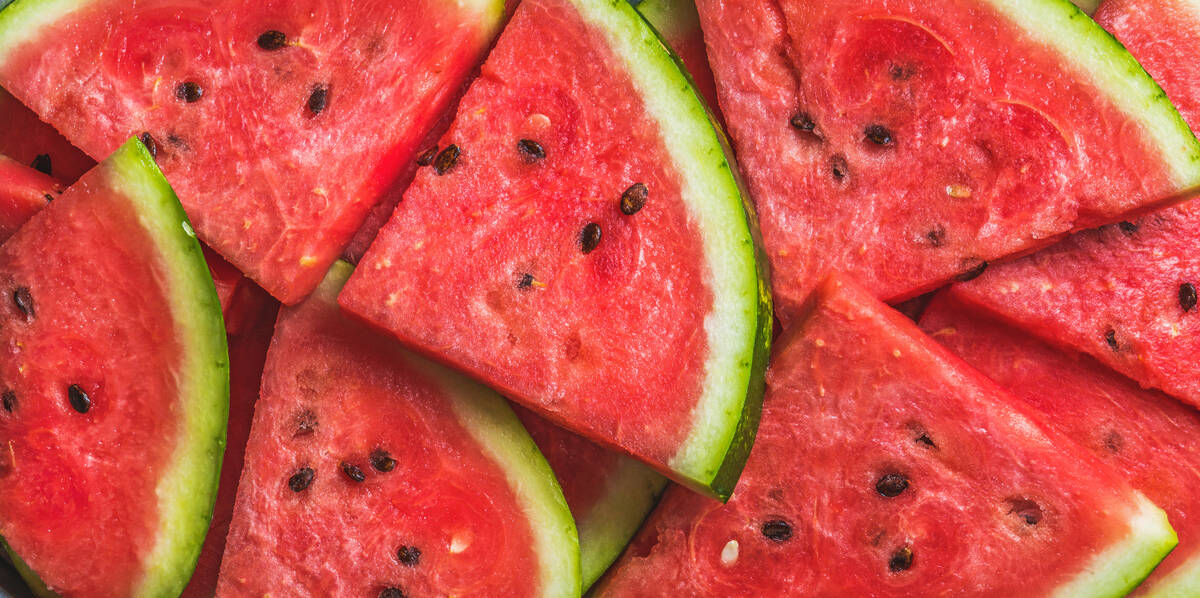Discover sweet health benefits of summertime melons
When it comes to melons, which one is your favorite?
Whether it’s cantaloupe, honeydew or watermelon, these summertime favorites contain some sweet health benefits.
Cantaloupe and honeydew melons belong to the muskmelon family and first grew in the Middle East. Watermelon originated in Africa. All three melons have a wide range of varieties. Look for kinds you haven’t tried before and introduce yourself and your family to something new.
Here’s how melons stack up nutritionally:
■ Cantaloupe: A one-cup serving of cantaloupe has only 53 calories, but it contains 106 percent of the daily recommended value for vitamin A and 95 percent of the daily recommended value for vitamin C. It’s also a good source of potassium and folate.
■ Honeydew: One cup of honeydew has 60 calories, 51 percent of the daily recommended value for vitamin C and 11 percent of the daily recommended value for potassium. Honeydew also contains fiber, folate and vitamin B6.
■ Watermelon: Watermelon is the lowest in calories, with 46 calories per one-cup serving. It’s loaded with the antioxidant lycopene, which is linked to decreased risk of cancer, heart disease and age-related eye disorders. It also contains vitamins A and C and potassium.
Because melons are high in water and contain potassium, they’re fantastic choices for maintaining healthy blood pressure levels.
How to choose
How do you pick the perfect melon? Choose a firm melon with no obvious bruising and one that’s heavy for its size, which gives a clue to how juicy it is.
Watermelon is best when it has a yellow belly, indicating it could have ripened in the field instead of the store or marketplace.
One variety of honeydew melon — the Santa Claus — turns yellow as it ripens. The more yellow it is, the sweeter the flavor.
Prepping and serving
Uncut melon can be stored at room temperature. Before cutting, wash the melon under running water and gently scrub the exterior with a brush to remove soil or contamination.
After cutting into the melon, remove the fruit from the rind. Then, store the chunks or slices in an airtight container in the refrigerator for up to five days.
Or after cutting larger melons such as watermelon, cover tightly with plastic wrap and refrigerate for up to five days.
While a juicy slice of melon is refreshing and nutritious all on its own, here are other ideas for serving melons:
■ Add melon chunks to the mix when making your favorite fruit smoothie.
■ Grill slices of cantaloupe or honeydew for one to two minutes on each side, which enhances their sweet flavor. Serve as a side with chicken, pork or fish or top with a scoop of ice cream for dessert.
■ Make melon kabobs by threading grapes, melon and cheese cubes onto skewers for a fun snack or easy appetizer. Refrigerate until you’re ready to serve them.
■ Puree melon with a pinch of sugar and a splash of lime juice to make frozen pops. Pour the mixture into molds and freeze.
■ Infuse water by chilling it with melon slices for a flavored summertime beverage with no added sugar.
Try this quick, cool, creamy melon salad for breakfast, lunch or dessert. For a plant-based version, use a yogurt substitute.
Creamy Spiced Melon Salad
Serves 4
2 cups diced assorted melon
½ cup plain or vanilla low-fat or nonfat yogurt
¼ teaspoon nutmeg
⅛ teaspoon clove
⅛ teaspoon cinnamon
Orange zest (about 1 tablespoon) and juice (about 3 tablespoons)
In a large bowl, mix all ingredients to combine. Serve cold.
Nutrition per serving (½ cup): 52 calories, trace total fat, 31 milligrams sodium, 11 grams total carbohydrate, 0 grams added sugars, 1 gram fiber, 2 grams protein.
Corrinna Lenort is a registered dietitian with the Mayo Clinic Health System.



















